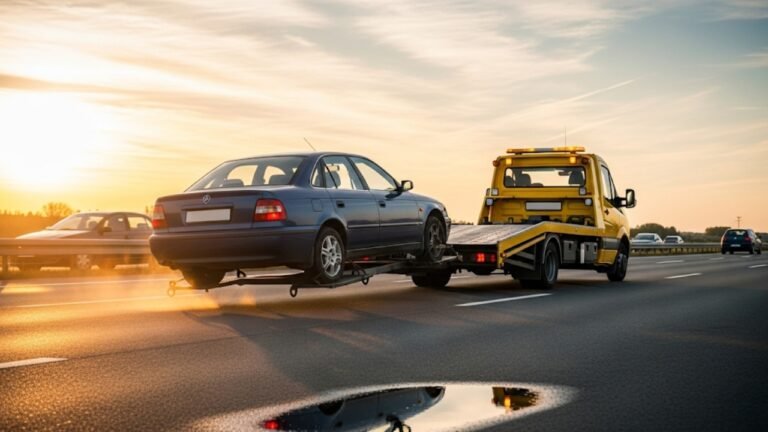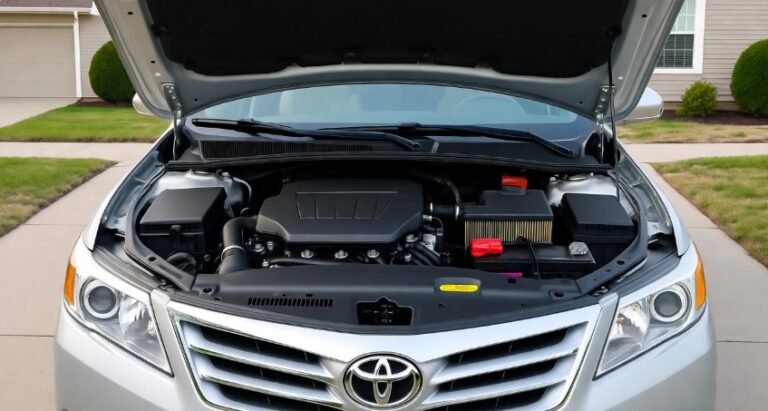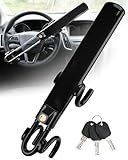5 Best RV Air Conditioners: Your Ultimate Guide

There’s nothing quite like life on the road. Whether you’re cruising through the Rockies or parking lakeside under the summer sun, RV travel brings freedom and adventure. But let’s be real—RV life without a reliable air conditioner is like camping with no tent. Hot. Sticky. And unbearable.
That’s where RV Air Conditioners come in. They’re not just about comfort—they’re about survival in peak summer. A well-functioning RV AC keeps your travel space cool, helps you sleep better, protects your pets and electronics, and keeps tempers from flaring when you’re stuck in traffic on a 100-degree day.
But with so many options out there, how do you know which one’s worth the install? Let’s take a look at the best models on the market and break down everything you need to know—without the fluff.
Why Choosing the Right RV Air Conditioner Matters
Before diving into specific models, let’s talk about why this choice is so important. Most RV Air Conditioners aren’t one-size-fits-all. You’ve got to consider things like:
BTU capacity (how much cooling power you actually need)
Noise level (because no one wants a jet engine in their ceiling)
Energy consumption (especially if you’re running solar or a generator)
Size and weight (less weight means better mileage)
Ease of installation (some units are DIY-friendly, others aren’t)
Just like you wouldn’t wear a parka in the desert, don’t buy an AC unit that doesn’t fit your RV lifestyle.
1. Dometic FreshJet 3 Series: Cool, Quiet, and Compatible

Let’s kick off with a real game-changer: the Dometic FreshJet 3 Series. This new-generation unit is packed with thoughtful design and robust performance, ideal for RVers who want maximum cooling without sacrificing peace and quiet.
Key Benefits:
Higher cooling capacity than most rooftop RV ACs
Greater airflow for faster, more even temperature control
14% lighter than previous Dometic Brisk II models
Compatible with existing Dometic and competitor air distribution boxes
Up to 4 dB quieter than leading rooftop units
Imagine pulling into a campground after a long day’s drive. You pop open a cold drink, hit the AC, and in minutes your RV feels like a cozy living room instead of a greenhouse on wheels. That’s the FreshJet difference.
The lightweight design doesn’t just make it easier to install—it reduces the load on your RV, which helps fuel efficiency. And if you’re upgrading from an older Dometic or similar competitor, good news: installation is likely a plug-and-play swap.
What stands out most, though, is the noise—or lack of it. If you’ve ever had an RV unit that rattles your bones every time it kicks on, this is your escape route. With quieter operations, your nights will be less “airplane hangar” and more “peaceful retreat.”
2. Furrion Chill 15,500 BTU: Power Meets Efficiency

Next up is the Furrion Chill, a beast in the best way possible. With a whopping 15,500 BTU, this is one of the most powerful RV Air Conditioners on the market. But don’t let that number scare you—it’s also surprisingly efficient.
Standout Features:
50% higher cooling capacity and 40% more energy efficiency than average
Dual-fan system moves air faster and more effectively
50% quieter than leading competitors
Built with VibrationSmart and ClimateSmart tech for durability
UV-resistant, thermally-insulated shroud
Lightweight and aerodynamic design
Easy bolt-on install, plus a 24-month warranty
Let’s break that down. The dual-fan system is a big deal—it means your RV cools down quicker and more evenly. Ever sat in the back of the RV while the front was freezing? This unit fixes that problem.
Now, the energy efficiency. At 1,720 watts, the Chill manages to outperform others with less power drain. That’s a win if you’re boondocking, using solar, or running on a generator with limited output.
Durability is where Furrion really shines. The UV-protected shell, resistant to debris and extreme temperatures, means you’re good to go even in places like Death Valley or Florida in July.
And yes, it’s quiet—so you can actually enjoy movie night without cranking the volume to max.
3. RecPro RV Air Conditioner 15K: Versatility Meets Smart Design

If you’re looking for an all-rounder that adapts to your setup, the RecPro RV Air Conditioner 15K is worth serious consideration. With an impressive 15,000 BTU output, ultra-quiet operation, and smart features, it’s built for travelers who demand both comfort and flexibility.
Highlights:
Low amp draw for off-grid or solar-friendly use
Ultra-quiet at just 55.4 dB
Sleek, aerodynamic rooftop profile
Comes with multi-function remote and LED touch panel
Supports both ducted and non-ducted systems
Includes built-in heat pump for year-round comfort
What sets RecPro apart is its focus on energy efficiency and adaptability. It pulls less power, which means you can keep the AC on without shutting off your fridge or microwave—even on limited electrical setups.
The built-in heat pump is a game-changer if you travel through varying climates. Heading to Arizona in August? You’re covered. Dropping into Colorado in October? Still covered. It’s a four-season climate solution in one sleek unit.
Also, the noise level here is super low—about the same as a gentle rain. That’s ideal if you’re working remotely, relaxing with a book, or trying to get the kids down for a nap.
And let’s not forget the touch display and remote. Being able to switch between modes—cool, dry, fan, sleep, and timer—without fiddling with knobs makes this unit feel high-end without the high price tag.
4. Dometic Brisk II: Rugged and Reliable for Every Journey

If you’re more of a “stick to what works” kind of traveler, then the Dometic Brisk II is your old reliable. It’s one of the most popular RV Air Conditioners out there—and for good reason. Dometic built this unit to be dependable, durable, and powerful enough for most standard RVs.
Key Features:
13,500 BTU cooling capacity—ideal for mid-sized RVs
High-performance fan and motor for consistent airflow
Noise and vibration dampening brackets
Compatible with ducted and non-ducted systems
Easy to install with simple electrical setup
2-Year Protection Plus Warranty
This is the kind of unit you install and forget—because it just works. The Brisk II doesn’t have touchscreens or flashy remotes, but it delivers consistent cooling with a high-quality motor that won’t give out after one hot summer.
Its noise-reduction tech—using vibration-dampening brackets—is a subtle but noticeable feature, especially if your current unit rattles the ceiling panels every time it kicks in.
Also, if you’re unsure whether your RV uses a ducted system, the Brisk II is flexible enough to handle either, making it a safe bet for both first-timers and experienced RVers.
5. Furrion Chill HE: High Efficiency with Heavy-Duty Performance

The Furrion Chill HE builds on the original Chill design but takes performance up another notch. It’s designed for maximum durability and cooling, especially for RVers who hit tough roads and harsh climates.
Top Features:
Dual-fan system with 15,000 BTUs of cooling power
50% higher capacity and 40% better energy use than many RV ACs
VibrationSmart™ and ClimateSmart™ tech for rugged travel
Aerodynamic and lightweight design
UV and thermal insulation for long-lasting performance
Simple bolt-on installation
The “HE” in Chill HE stands for High Efficiency, and it’s not just a buzzword. This unit’s ability to move cool air faster and quieter sets it apart, especially in larger RVs or trailers where one AC unit has to do all the work.
And let’s talk about longevity. The UV-resistant shroud and thermal protection mean your investment won’t degrade from sun exposure or road dust. It’s basically like wrapping your AC in armor—but without weighing down your RV.
For people constantly on the road—especially full-time RVers—this unit checks all the boxes: powerful, efficient, rugged, and easy to maintain.
What to Look for When Buying an RV Air Conditioner
Choosing the right RV Air Conditioner can be overwhelming, especially with so many options and tech specs to compare. Here’s what to keep in mind when shopping for the perfect unit:
BTU Capacity
The higher the BTU (British Thermal Units), the more cooling power. A typical RV needs 13,500 to 15,000 BTUs. Bigger isn’t always better—get the size that fits your RV’s square footage.
Energy Efficiency
If you’re running off solar or a generator, look for low amp draw models like the RecPro or Chill HE. Energy-efficient units save power and extend your battery life off-grid.
Noise Level
Some air conditioners can be louder than your tow vehicle. Look for models with sound-dampening brackets or that advertise decibel levels under 60 dB.
Ducted vs Non-Ducted
Know your RV’s setup. A ducted system spreads cool air through ceiling vents, while non-ducted units push air directly into the cabin. Make sure your unit matches your layout.
Installation Simplicity
If you’re not an electrician, go for bolt-on or plug-and-play units. Some models are even backward-compatible with older systems.
Heat Pump Feature
Want four-season comfort? Choose a unit like the RecPro with a built-in heat pump so you can warm your RV in chilly weather.
FAQs
What size RV air conditioner do I need?
It depends on the size of your RV. Generally:
Under 200 sq ft → 13,500 BTU is enough
200–300 sq ft → 15,000 BTU is ideal
Over 300 sq ft → Consider dual AC units
Can I install an RV AC unit myself?
Yes, many models like the Furrion Chill and RecPro 15K are DIY-friendly. If you’re replacing an old unit with a similar setup, it’s often a direct swap.
How loud are RV Air Conditioners?
Old units can be noisy (70–80 dB). Newer models like RecPro and Dometic FreshJet are much quieter—some under 60 dB, similar to background conversation or light rain.
Do RV Air Conditioners also heat?
Some units do! Models like the RecPro 15K come with a built-in heat pump, perfect for staying warm on cold nights without using a furnace.
How long does an RV AC unit last?
A good RV Air Conditioner should last 5–10 years with proper maintenance. Clean filters regularly and check seals for leaks.
Can I run an RV AC on solar?
Yes, but you’ll need a powerful solar setup and inverter. Units with low amp draw, like RecPro, are more solar-friendly.
What maintenance does an RV AC need?
At least once a season:
Clean the air filters
Check for debris in the vents
Inspect the shroud and seals
Ensure wiring is tight and corrosion-free
Can I replace my old AC with a new one easily?
Yes. Most new units like Dometic FreshJet or Furrion Chill are backward-compatible, meaning they’ll fit where your old one sat with little or no modification.
Final Thoughts: Comfort on the Road Starts with Climate Control
In the world of RVing, comfort and convenience aren’t luxuries—they’re essentials. A reliable, quiet, and energy-efficient RV Air Conditioner makes your journey smoother and your pit stops a whole lot cooler.
Whether you’re a weekend warrior or a full-time nomad, choosing the right unit—like the FreshJet, Chill HE, or RecPro 15K—can be the difference between sleepless nights and stress-free adventures.
So don’t wait until you’re sweating in the middle of nowhere. Upgrade your RV Air Conditioner now and enjoy the cool comfort of the road ahead.






